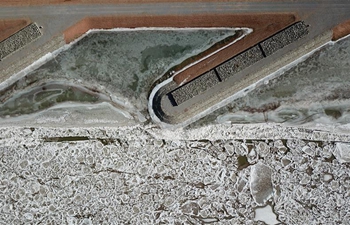CANBERRA, Jan. 17 (Xinhua) -- Iconic Tasmanian tigers and devils went extinct on the Australian mainland at the same time 3,200 years ago, a study has found.
The research, released by the University of Adelaide and Flinders University on Wednesday, unlocked a key cog in discovering why the two native species' disappeared from mainland Australia.
Jeremy Austin, the lead author of the study from the University of Adelaide, said that the finding that the simultaneous extinction of the devils and tigers indicated that they were wiped out by a common cause.
Austin's team dated the youngest known fossils of both species and analyzed reliable date records from other fossils to identify the extinction date as being 3,200 years ago.
The Tasmanian tiger, also known as the thylacine, has survived in the island state of Tasmania until the 20th century.
"For many years, scientists have been unsure exactly when thylacines and devils went extinct on the mainland -- a recent age for devil extinction (500 years before present) has recently been shown to be unreliable. The next youngest reliable devil fossil is 25,000 years old," Austin said.
"Knowing when both species went extinct is important to understand why they went extinct on the mainland, but survived in Tasmania -- extinction at the same time would support the idea that a common factor (or set of factors) caused both species to go extinct.
"The team used new, high-quality radiocarbon dates from thylacine and devil fossil bones from across southern Australia. These new dates include the youngest fossil samples ever found for both species (3,245 years before present for the devil and 3,290 years before present for the thylacine)."
The Tasmanian devil remains endangered having almost been entirely wiped out in the 20th century by devil facial tumour disease (DFTD), a type of cancer which has been estimated to have wiped out 95 percent of the devil population in parts of Tasmania.

















